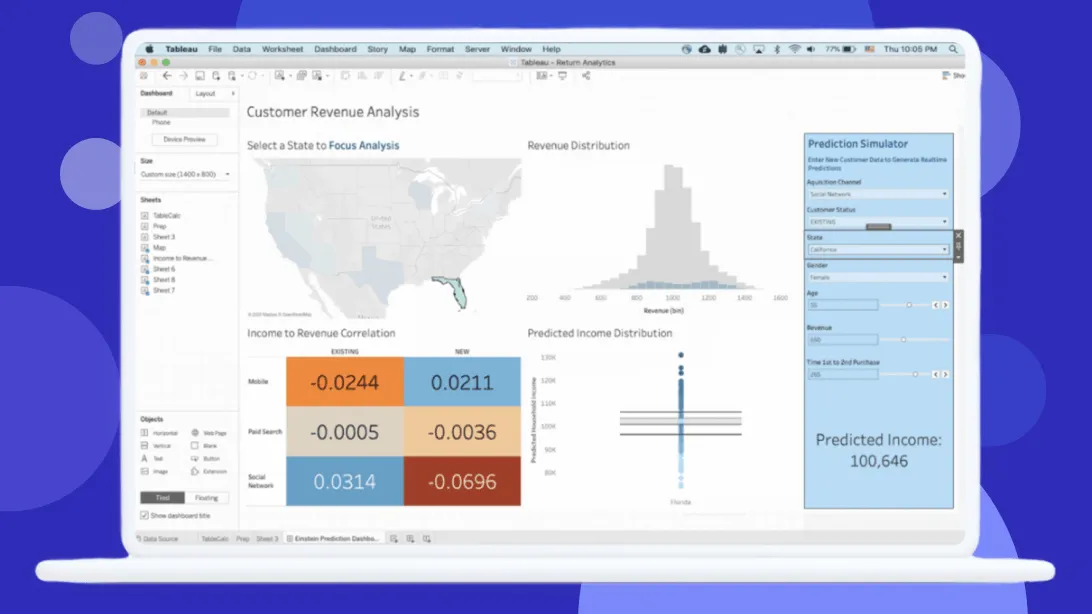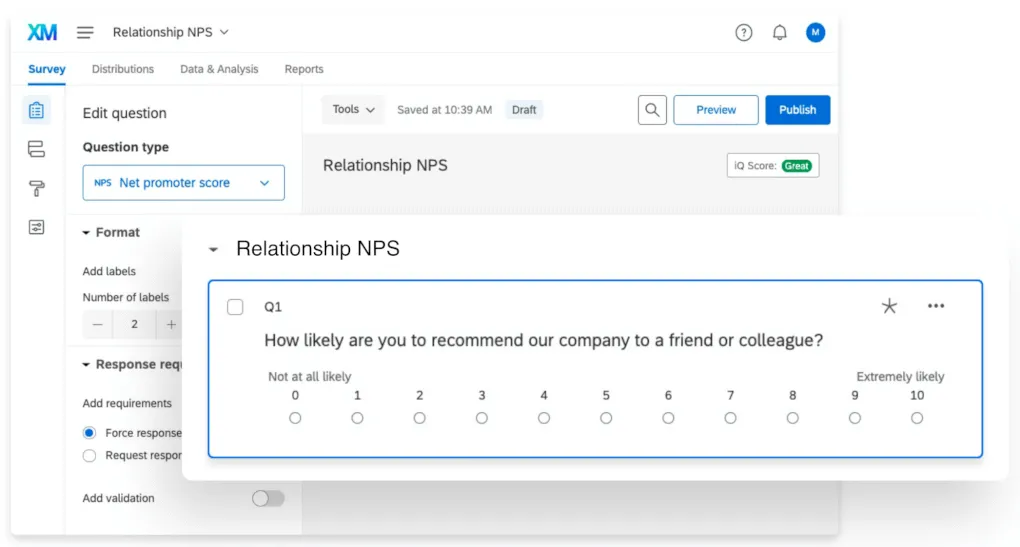Introduction to Sales Productivity

Sales Productivity Definition
Sales productivity is how well your sales team uses their time and resources to sell products. It’s about making the most sales with the least effort.
Sales productivity tools can help sales teams use their time and resources more effectively by enabling them to focus on high-impact activities, reducing inefficiencies, and empowering them to create and close deals with excellence through the use of technology.
Sales productivity measures how effective your sales reps are. If they close many deals quickly, they are productive. If it takes them a long time to close few deals, they are not as productive.
Example: If a sales rep makes 20 calls a day and closes 5 deals, their productivity is higher than a rep who makes 30 calls but only closes 2 deals. The first rep uses time and effort more effectively.
Why Is Sales Productivity Important
Sales productivity is crucial because it affects your business’s success.
1. Higher Revenue
- The more productive your sales reps are, the more products they sell. This means more money for your company.
2. Efficient Use of Time
- Productive sales reps use their time wisely. They focus on activities that lead to sales, like talking to potential customers and closing deals. Sales reps spend a significant amount of their time on administrative tasks, such as entering contacts into CRM, writing emails, and managing repetitive tasks.
- Automation tools like sales engagement platforms, email automation, and route optimization software can help reduce this burden and increase the team's productivity.
3. Better Performance
- Measuring sales productivity helps identify who is performing well and who might need more training.
Role of the Sales Team in Productivity
The sales team plays a big part in how productive your sales process is. Each team member needs to work efficiently and effectively. Here’s how they can do it:
Key Roles:
- Sales Reps: They need to be well-trained and use their time wisely. Sales reps who receive regular coaching see a 27% increase in win rates.
- Sales Managers: They should set clear goals and provide the right tools. Effective sales managers can boost team productivity by 15%.
- Sales Leaders: They must motivate and lead by example. Strong leadership and sales industry can improve sales performance by 25%.
Improve Sales Team Productivity with:
- Training and Coaching: Regular training helps sales reps improve their skills. Coaching can provide guidance and support.
- Using Sales Tools: Tools like Customer Relationship Management (CRM) systems help sales teams manage their tasks and track progress.
- Setting Clear Goals: Sales managers should set clear, achievable goals for their team. This helps everyone stay focused and motivated.
5 Benefits of Increased Sales Productivity

1. Driving Revenue Growth
Increased sales productivity leads to higher revenue. Below is how it can be done:
- Higher Conversion Rates: When sales reps are productive, they convert more leads into customers. For example, if a sales rep productivity converts 20% of their leads instead of 10%, they double their sales without doubling their efforts.
- Increased Average Deal Size: Productive sales reps often close bigger deals. By focusing on high-value customers, they can increase the average deal size. This means more money from each sale.
- Improved Sales Pipeline Management: Managing the sales pipeline effectively ensures that leads move smoothly through the sales process. This results in more consistent sales and fewer lost opportunities.
2. Enhancing Sales Reps' Efficiency
Productive sales reps work smarter, not harder. This improves sales game and their efficiency in several ways:
- Time Management and Prioritization: Sales reps who manage their time well can focus on high-priority tasks. This means they spend more time selling and less time on non-essential activities.
- Reduction in Administrative Tasks: By using sales tools to automate repetitive tasks, reps have more time to sell. For example, automating email follow-ups frees up time for more customer interactions.
- Better Use of Sales Tools and Technologies: Effective use of CRM systems and other sales tools helps reps keep track of their leads and activities. This leads to better organization and more sales.
3. Improved Overall Sales Process
A productive sales team improves the entire sales process. Below are the benefits:
- Streamlined Lead Qualification: Productive teams quickly identify which leads are most likely to buy. This means they spend less time on leads that won't convert and more on those that will.
- Enhanced Customer Relationships: When sales reps are productive, they can spend more time building relationships with prospective customers. This leads to better customer satisfaction and repeat business.
- Faster Sales Cycle Times: A shorter sales cycle means more deals close faster. This is good for cash flow and keeps the sales pipeline moving. For example, reducing the sales cycle from 60 days to 30 days doubles the speed at which revenue is generated.
4. Increased Team Morale and Motivation
When sales productivity improves, the morale and motivation of the whole sales leader and team also increase. Here's why:
- Recognition and Rewards for High Performance: Recognizing and rewarding sales reps for their achievements increases their confidence and motivation. When a sales rep gets praised for closing deals, they feel valued and motivated to keep performing well.
- Opportunities for Career Development: Productive sales teams often have more opportunities for career growth. Training and coaching programs help sales reps develop new skills, leading to promotions and career advancement.
- Clearer Goals and Objectives: Clear goals help sales professionals and teams stay focused and motivated. When sales executives and reps know what they are aiming for, they can work more effectively. This clarity leads to greater job satisfaction and productivity.
5. Strengthens Customer Retention
Improved sales productivity also helps in keeping customers loyal. Here are the key aspects:
- Improved Post-Sale Support: When sales reps are more productive, they have more time to provide excellent post-sale support. This helps in solving customer issues quickly and effectively, making customers happy and more likely to stay.
- Proactive Customer Engagement: Productive sales teams can engage with customers proactively. Regular check-ins and updates make customers feel valued and appreciated. This ongoing communication builds stronger relationships.
- Consistent Follow-Up Strategies: Following up with customers consistently ensures they do not feel neglected. It helps in addressing any concerns they may have and keeps them satisfied. A happy customer is more likely to become your loyal customer.
21 Strategies to Increase Sales Productivity

1. Prioritize High Impact Activities
Focusing on the most important tasks can greatly improve sales productivity. Here’s how:
Identify High-Value Opportunities: Look for sales opportunities that are likely to bring in the most revenue. These sales calls are high-value deals that can make a big difference for your company.
Focus on Key Accounts: Spend more time on your most important customers. These are the accounts that bring in the most business and have the potential for long-term growth.
Time Management Techniques for Sales Reps: Teach your sales reps how to manage their time effectively. This includes setting priorities, avoiding distractions, and using tools to stay organized.
2. Automating Low Impact, Urgent Tasks
Automating routine tasks saves time and allows the sales reps time to focus on more important activities. Sales reps spend a significant amount of their time on administrative tasks, such as entering contacts into CRM, writing emails, and managing repetitive tasks.
Using automation tools like sales engagement platforms, email automation, and route optimization software can help them save time and increase sales productivity.
Automation Software Options: Use software that automates repetitive tasks, like sending follow-up emails or scheduling meetings. This frees up time for sales reps to engage with customers.
Set Up Automated Workflows: Create workflows that automate common tasks. For example, an automated email can be sent to a customer after a sales call, thanking them for their time and providing additional information.
Monitor and Optimize Automated Processes: Regularly check your automated processes to ensure they are working correctly. Make adjustments as needed to improve efficiency.
3. Streamline the Sales Process
A smooth sales process increases sales efficiency, and helps sales teams close deals faster.
Map Out the Sales Process: Create a clear map of each step in your sales process. This helps sales reps understand what they need to do and when.
Eliminate Bottlenecks and Inefficiencies: Look for areas where the sales process slows down and find ways to improve them. This might involve removing unnecessary steps or using tools to speed up tasks.
Implement a CRM System: Utilize a Customer Relationship Management (CRM) system to monitor customer interactions. This enables sales reps to efficiently manage their leads and ensure timely follow-ups.
Example: A company mapped out their sales process and identified several bottlenecks. By eliminating these inefficiencies, they reduced the time it took to close a deal by 20%.
4. Implement Sales Training and Coaching
Training and coaching are crucial for improving sales productivity. Here’s how:
Develop a Sales Training Program: Create a program that teaches sales reps the skills they need. This can include everything from product knowledge to sales techniques. For example, regular training sessions can help new sales reps learn how to close deals more effectively.
Coaching Techniques for Sales Managers: Sales managers should use coaching techniques to help their teams improve. This can include one-on-one meetings to discuss performance and provide feedback. Effective sales coaching also helps sales reps understand their strengths and areas for improvement.
Continuous Learning and Development: Encourage continuous learning by providing opportunities for sales reps to develop their skills. This can be through workshops, online courses, or industry events. Continuous learning keeps the team up-to-date with the latest sales strategies and tools.
5. Utilize Data Analytics
Using data analytics can significantly improve sales productivity. Here’s how:
Track Sales Performance Metrics: Monitor key performance indicators (KPIs) to understand how well your sales team is performing. Metrics like conversion rates, average deal size, and average sales cycle length can provide valuable insights.
Use Predictive Analytics: Predictive analytics can help forecast future sales trends. This allows sales teams to prepare and adjust their strategies accordingly. For example, if data predicts a rise in demand for a product, the sales and marketing team can focus their efforts on promoting it.
Leverage CRM Data for Insights: Use data from your Customer Relationship Management (CRM) system to gain insights into customer behavior. This data can help sales reps tailor their approach to meet customer needs more effectively.
Example: A sales team used CRM data to identify the best times to contact leads, which increased their conversion rates by 15%.
6. Enhance Communication and Collaboration
Improving communication and collaboration within the sales team can boost productivity. Here’s how:
Improve Internal Communication Channels: Ensure that sales reps can easily communicate with each other and with management. This can be through tools like Slack or regular team meetings. Good communication helps resolve issues quickly and keeps everyone on the same page.
Collaborative Tools for Sales Teams: Use tools that allow sales reps to collaborate effectively. This can include shared documents, project management software, and team messaging apps. Collaboration tools help sales teams work together more efficiently.
Regular Team Meetings and Feedback Sessions: Hold regular meetings with sales department to discuss progress, challenges, and strategies. Feedback sessions allow sales reps to share their experiences and learn from each other. Regular meetings ensure that everyone is aligned with the team’s goals.
Example: A sales team that held weekly meetings to discuss their progress and challenges saw a 10% increase in productivity. These meetings provided a platform for sharing best practices and addressing issues promptly.
7. Leverage Sales Enablement Tools
Using a full sales enablement strategy, platform and tools can significantly boost sales productivity. Here’s how:
Sales productivity tools can help sales teams access information quickly and reduce inefficiencies, enabling them to focus on high-impact activities and close deals with excellence through the use of technology.
Implement Sales Enablement Software: Use software designed to help sales teams access the information they need quickly. This includes tools that store presentations, documents, and other resources.
Provide Sales Reps with the Right Content: Make sure your sales reps have access to content that helps them close deals. This can include case studies, product information, and customer testimonials.
Streamline Content Management: Organize your content so that sales reps can find what they need easily. This reduces the time spent searching for information and increases the time spent selling.
8. Align Sales and Marketing Efforts
Aligning sales and marketing efforts ensures both teams work towards the same goals. Here’s how:
Create Unified Sales and Marketing Goals: Set goals that both the sales force and marketing teams aim to achieve. This ensures that their efforts complement each other.
Share Data and Insights between Teams: Regularly share data and insights between sales and marketing teams. This can include customer feedback, market trends, and campaign performance.
Joint Campaigns and Initiatives: Plan and execute joint campaigns where sales and marketing work together. This creates a seamless experience for potential customers and improves conversion rates.
Example: A company that aligned its sales and marketing teams saw a 15% increase in lead conversion rates. The teams worked together on campaigns and shared insights to improve their strategies.
9. Optimize Lead Management
Effective lead management is crucial for improving sales productivity. Here’s how:
Improve Lead Qualification Processes: Develop processes to show lead quality and identify which leads are most likely to convert. This helps sales reps focus their efforts on high-quality leads.
Implement Lead Scoring Systems: Use lead scoring systems to prioritize leads based on their likelihood to convert. This ensures that sales reps focus on the most promising leads first.
Nurture Leads through the Sales Funnel: Develop strategies to nurture leads through each stage of the sales funnel. This can include follow-up emails, personalized content, and targeted offers.
Example: A sales team that implemented lead scoring and nurturing strategies saw a 30% increase in conversion rates. They were able to focus on high-quality leads and guide them through the sales process effectively.
10. Adopt Agile Sales Methodologies
Using agile methodologies in sales can help teams become more productive. Here's how:
Implement Agile Practices in Sales: Agile practices involve breaking down tasks into smaller, manageable parts. This helps sales teams stay organized and focused on their goals. For example, daily stand-up meetings can help sales reps stay on track and address any issues quickly.
Continuous Improvement through Feedback: Agile methods emphasize continuous improvement. This means regularly seeking feedback from customers and team members to improve processes.
For instance, after a sales cycle, teams can discuss what worked well and what didn’t to make necessary adjustments.
11. Foster a Positive Sales Culture
Creating a positive sales culture is essential for maintaining high productivity levels. Here’s how:
Encourage Healthy Competition: Healthy competition among sales reps can motivate them to perform better. This can be achieved through sales contests or leaderboards. However, it's important to keep the competition friendly and supportive.
Recognize and Reward Achievements: Recognizing and rewarding sales reps for their achievements boosts morale and motivation. This can be done through awards, bonuses, or public recognition during team or sales meetings themselves.
Create a Supportive Team Environment: A supportive environment encourages collaboration and teamwork. This means fostering open communication, offering help when needed, and celebrating team successes.
Example: A company that recognized and rewarded its sales reps saw a 30% increase in average sales rep productivity. Sales reps felt valued and motivated to achieve their targets.
12. Implement a Customer-Centric Approach
Focusing on the customer can significantly boost sales productivity. Here’s how:
Understand Customer Needs: Spend time understanding what your customers need and want. This helps tailor your sales approach to meet their expectations.
Personalize Customer Interactions: Use data to personalize interactions with customers. This can include personalized emails, product recommendations, and tailored offers.
Provide Excellent Customer Service: Ensure that your sales team provides exceptional customer service. This includes being responsive, helpful, and going the extra mile to satisfy customers.
13. Improve Sales Forecasting
Accurate sales forecasting helps in planning and decision-making. Here’s how:
Use Historical Data: Analyze past sales data to identify trends and patterns. This helps predict future sales more accurately.
Incorporate Market Insights: Use market research and insights to inform your own sales strategy and forecasts. This includes understanding market conditions, customer behavior, and competitive landscape.
Adjust Forecasts Regularly: Regularly review and adjust your sales forecasts based on new data and insights. This ensures that your forecasts remain accurate and relevant.
14. Enhance Sales Compensation Plans
A well-designed compensation plan can motivate sales reps and increase productivity. Here’s how:
Set Clear Incentives: Create clear and achievable incentives for your sales reps. This includes bonuses, commissions, and other rewards for meeting or exceeding targets.
Align Compensation with Goals: Ensure that your compensation plan aligns with your overall sales goals. This motivates sales reps to focus on the right activities and behaviors.
Regularly Review and Adjust Plans: Regularly review your compensation plans to ensure they remain competitive and effective. Make adjustments as needed to keep your sales team motivated.
15. Develop Strong Leadership
Effective leadership is crucial for generating revenue and driving sales productivity. Here’s how:
Provide Clear Direction: Sales leaders should provide clear direction and guidance on sales operations to their teams. This includes setting expectations, providing feedback, and offering support.
Lead by Example: Sales leaders should lead by example and demonstrate the behaviors they expect from their team. This includes being proactive, staying motivated, and maintaining a positive attitude.
Invest in Leadership Development: Invest in developing the leadership skills of your sales managers. This includes training, coaching, and providing opportunities for growth.
16. Optimize Territory Management
Effective territory management helps sales reps focus their efforts and grow productivity. Here’s how:
Define Clear Territories: Clearly define sales territories based on factors like geography, customer segments, and market potential. This helps sales reps focus their efforts and avoid overlap.
Allocate Resources Effectively: Allocate resources based on the potential of each territory. This includes assigning the right number of sales reps and providing sales quotas with the necessary support and tools.
Regularly Review and Adjust Territories: Regularly review and adjust territories based on performance and market changes. This ensures that your territory management strategy remains effective.
17. Invest in Sales Technology
Investing in the right technology can significantly increase sales productivity. Here’s how:
Use CRM Systems: Implement a CRM system to manage customer interactions and sales data. This helps sales reps stay organized and informed.
Adopt Sales Automation Tools: Use sales automation software tools to handle routine tasks like data entry, email follow-ups, and scheduling meetings. This frees up time for sales reps to focus on selling.
Implement Sales Analytics Tools: Use analytics tools to gain insights into sales performance and identify areas for improvement. This helps in making data-driven decisions.
18. Focus on Lead Generation
Effective lead generation strategies can increase sales productivity. Here’s how:
Use Multiple Channels: Use a variety of channels to generate leads, including email marketing, social media, and content marketing. This helps reach a wider audience.
Optimize Landing Pages: Ensure that your landing pages are optimized for conversions. This includes clear calls-to-action, compelling content, and easy navigation.
Engage in Networking: Encourage sales reps to engage in networking activities to generate leads. This includes attending industry events, joining professional organizations, and building relationships.
19. Enhance Sales Onboarding
Effective onboarding helps new sales reps become productive quickly. Here’s how:
Create a Structured Onboarding Program: Develop a structured onboarding program that covers everything new sales reps need to know. This includes company information, product knowledge, and sales techniques.
Provide Ongoing Support: Offer ongoing support to new sales reps through mentoring, coaching, and regular check-ins. This helps them feel supported and confident.
Monitor Progress: Regularly monitor the progress of new sales reps and provide feedback. This helps identify areas for improvement and ensures they stay on track.
20. Improve Sales Content
High-quality sales content can boost productivity by helping sales reps close deals more effectively. Here’s how:
Develop Compelling Sales Collateral: Create compelling sales collateral like brochures, case studies, and presentations. This helps sales reps communicate the value of your products or services.
Use Video Content: Use video content to engage potential customers and explain complex concepts. This can include product demos, customer testimonials, and explainer videos.
Regularly Update Content: Regularly update your sales content to ensure it remains relevant and effective. This includes adding new case studies, updating product information, and refining messaging.
21. Foster a Culture of Accountability
Accountability can drive sales productivity by ensuring that sales reps stay focused and motivated. Here’s how:
Set Clear Expectations: Set clear expectations for performance and behavior. This includes: sales goals and targets, activity goals, and conduct standards.
Monitor Performance: Regularly monitor the performance of your sales reps and provide feedback. This helps identify areas for improvement and ensures accountability.
Recognize and Address Issues: Recognize and address performance issues promptly. This includes providing support and resources to help sales reps improve, as well as taking corrective action when necessary.
Key Performance Indicators (KPIs) for Sales Productivity

Key Performance Indicators (KPIs) are metrics used to measure sales activities and evaluate the success of your sales efforts. Below are some important KPIs to measure sales productivity:
1. Conversion Rates
Conversion rates show the percentage of leads that turn into customers. This metric helps you understand how effective your sales process is at closing deals.
How: Track the number of leads generated and how many of them become paying customers.
2. Average Deal Size
Average deal size is the average amount of revenue generated per sale. It helps you understand the value of each sale and identify opportunities to increase revenue.
How to generate revenue: Divide the total revenue by the number of deals closed in a given period.
3. Win Rate
Win rate is the percentage of sales opportunities that result in a closed deal. It shows how successful your sales team is at closing deals.
How: Calculate by dividing the number of won deals by the total number of opportunities and multiplying by 100.
4. Sales Cycle Length
Sales cycle length is the average time it takes to close a deal from initial contact to final sale. Shorter sales cycles mean quicker revenue generation and better efficiency.
How: Track the start and end dates of sales processes and calculate the average duration.
10 Tools for Measuring Sales Productivity

1. CRM Systems
Customer Relationship Management (CRM) systems help track all interactions with customers. They provide valuable data on customer behavior and sales activities.
Salesforce

This tool helps you organize all your customer information in one place. It also provides insights into sales activities and performance.
HubSpot

HubSpot is great for tracking emails, calls, and meetings. It helps sales reps stay on top of their tasks and follow up with customers.
2. Sales Enablement Software
Sales enablement software provides resources and tools to help sales teams sell more effectively. These tools improve access to information and streamline sales processes.
Seismic

Seismic helps sales reps find the right content at the right time. It also provides analytics to see which content works best.
Highspot

Highspot offers a platform where sales teams can share and manage their content. It also integrates with CRM systems to provide seamless access to information.
3. Sales Performance Dashboards
Dashboards aggregate sales data into visual formats. They help sales teams quickly understand performance metrics.
Tableau

Tableau allows you to create interactive and detailed dashboards. It helps you track sales metrics like conversion rates and average deal size.
Power BI
Power BI is another great tool for visualizing sales data. It connects to various data sources to provide a complete view of your sales performance.
4. Lead Scoring Tools
Lead scoring tools assign values to potential customers based on their likelihood to convert. They help prioritize leads, ensuring sales reps focus on the most promising opportunities.
Leadspace

Leadspace helps you prioritize leads. It scores leads based on their likelihood to buy. This means your sales reps can focus on the most promising leads first. Using Leadspace, you can improve your sales process and close more deals.
5. Analytics Platforms
Analytics platforms analyze large sets of sales data. They provide deeper insights into sales performance and trends.
Google Analytics

This tool helps you track website traffic and user behavior. You can see how visitors interact with your site, which helps in understanding customer interests.
Adobe Analytics

Similar to Google Analytics, Adobe Analytics provides detailed insights into user behavior. It helps you track customer journeys and identify areas for improvement.
6. Sales Forecasting Tools
Sales forecasting tools predict future sales based on historical data. Accurate forecasting helps in planning and resource allocation.
Anaplan

Anaplan helps predict future sales based on historical data. This allows you to plan better and allocate resources efficiently.
IBM Planning Analytics

This tool also helps in forecasting sales. It uses advanced analytics to provide accurate sales predictions.
7. Activity Tracking Software
Software tracks daily sales activities and helps to measure productivity and identify areas for improvement.
Trello

Trello uses boards, lists, and cards to organize tasks. Sales reps can see what needs to be done and stay on track.
Monday.com
Similar to Trello, Monday.com helps manage tasks and projects. It provides a clear view of sales activities and progress.
8. Communication Tools
Tools facilitate communication within the sales team and with customers. Effective communication is crucial for collaboration and customer engagement.
Slack

Slack allows for quick messaging and file sharing. It integrates with other tools, making communication easy and efficient.
Microsoft Teams

Microsoft Teams is great for team communication and collaboration. It offers chat, video calls, and file sharing.
9. Customer Feedback Tools
Tools collect and analyze customer feedback. Customer feedback provides insights into the sales process and customer satisfaction.
SurveyMonkey

SurveyMonkey allows you to create surveys to gather customer feedback. This feedback can be used to make improvements.
Qualtrics

Qualtrics is another tool for collecting and analyzing customer feedback. It helps you understand customer needs and improve sales productivity.
10. Sales Training Platforms
Platforms provide training resources for sales teams. Continuous training improves skills and sales effectiveness.
Lessonly

Lessonly provides training resources for sales teams. Continuous training helps sales reps become more effective.
MindTickle

MindTickle offers sales training and coaching programs. It helps sales reps stay up-to-date with the latest sales techniques.
Conclusion
Sales and increasing sales productivity is crucial for the success of your business. By understanding the right sales productivity tools and definition and using the right tools and strategies, you can significantly increase your sales team's efficiency.
The goal is to make the most sales with the least effort. Focus on training your sales reps, setting clear goals, and continuously improving your processes. Keep monitoring your sales productivity metrics to stay on track and make data-driven decisions.
This will ensure your sales team stays motivated, efficient, and successful. By implementing these strategies, you can create a productive and effective sales team that achieves outstanding results.





.jpg)

.jpg)
